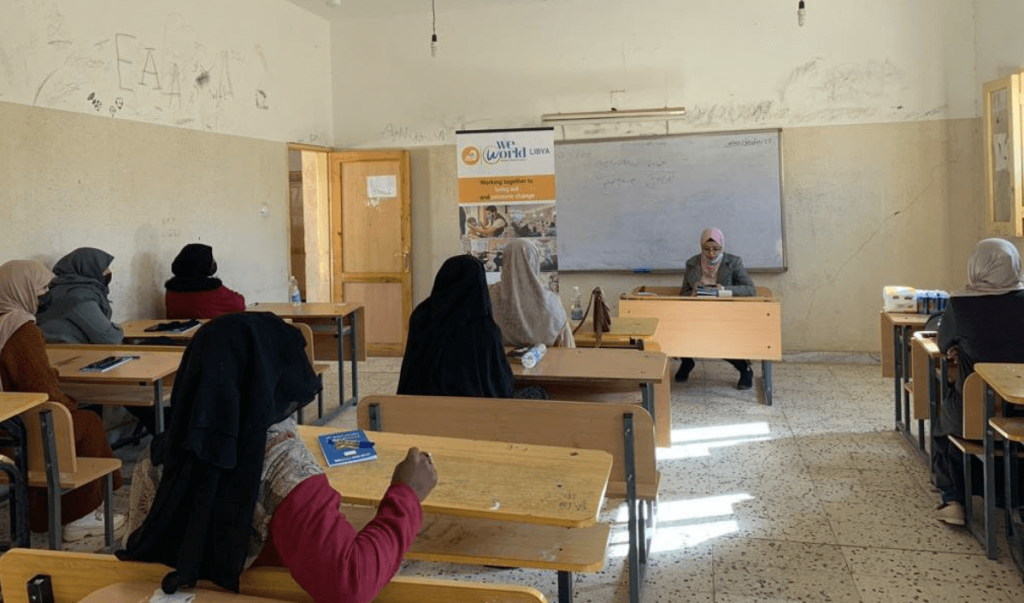Since 2011, Libya has been in an ongoing conflict that has led to massive displacement of people. In these eleven years, many Libyans have been unable to find a safe home. WeWorld-GVC (WW-GVC) has been present in Libya since 2018, implementing projects to promote safe access to water, sanitation and hygiene (WASH), primary health care and response to COVID -19 (health), capacity building of local Municipalities and civil society organizations (CSOs), and promoting respect for human rights through a nexus approach and integrated protection programming (protection). WW-GVC is currently working in southern Libya (Fezzan region) with a local and implementing partner, the civil organization MIGRACE.
Between December 2021 and January 2022, a protection risk assessment was conducted in the mantikas of Sabha, Al Shati, and Ubari (Fezzan region) as part of a community-based approach (CPA) targeting specific vulnerable communities. The process was led by WW-GVC in collaboration with MIGRACE under the Italian Cooperation (AICS) funded project AID 12031, “Emergency Program in Libya to improve basic Health and Protection services for the most vulnerable population”.
The objective of this Protection Analysis Report is to gain an initial understanding of the limitations and opportunities to obtain more relevant protection monitoring data on the ground (evidence-based approaches) and to define protection strategies tailored to the context. The focus is placed on two protection risks that have been demonstrated through on- the-ground intervention and monitoring by WW-GVC and that can be linked to the overall lack of effective governance mechanisms and the unstable security context through systemic root cause analysis:
- Denial of access to services and providers (especially for vulnerable groups)
- Forced migration of the population in the conflict context
Through the analysis of these two identified protection risks, findings on specific threats to affected populations were highlighted (e.g., lack of recognition of humanitarian and protection needs of populations, denial of needs and entitlements as well as resources and economic opportunities, conflict-induced internal displacement, and restriction of freedom of movement).
This allowed for the identification of the impact of these threats on affected populations, including the characteristics of their vulnerability (health and livelihood problems, school dropout, increase in demographics and inter-group social tensions), coping strategies (internal migration, secondary movements of IDPs), and finally, existing (or lack of) capacity to mitigate the risks (social cohesion based on tribal dynamics, community conflict prevention and resolution mechanisms, or limited presence of international and national humanitarian actors on the ground).
To read the full Report: “A Protection Analysis Report in South of Libya operationalized through the Community Protection Approach (CPA)”

